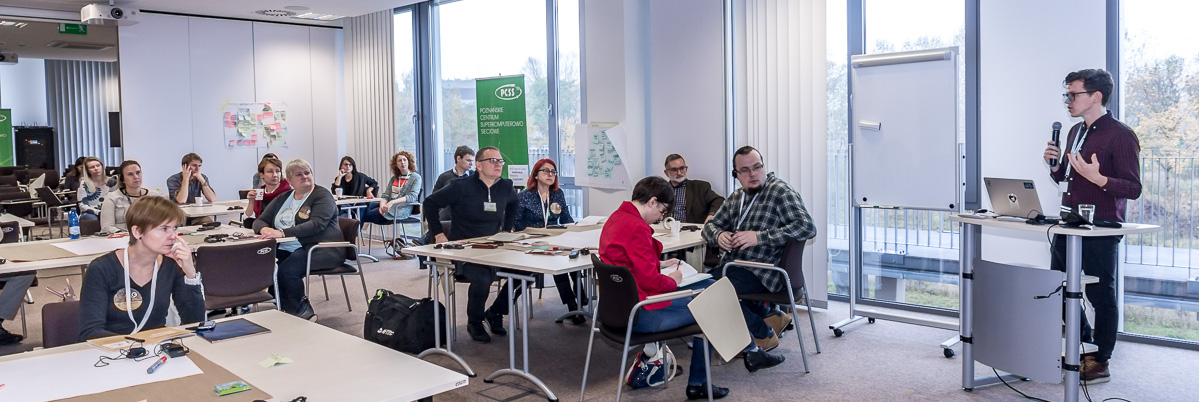Highlights from the TuEuropeana project workshops: Europeana for cultural institutions

Following on from a first post about education professionals, this second blog focuses on cultural institutions and collection holders.
The TuEuropeana project recently led a series of workshops in Poland, inviting potential Europeana users to exchange about their experiences. While the first sessions in Lublin focused on educational use, we invited representatives of various cultural institutions and digital collection holders to a second workshop series aimed at debunking myths and insecurities about digital access to international collections.

Photo. Maciej Rutkowski, PSNC, CC BY-SA
Discussions took place in Poznań Supercomputing and Networking Center, the leader in implementing innovative technologies for the national scientific network. Workshops were prepared and performed by Marcin Werla, Head of Digital Libraries and Knowledge Platforms Department in Poznań Supercomputing and Networking Center, with interventions by other expert speakers - such as Joris Pekel, author of Europeana Publishing Framework, a useful tool for cultural institutions planning their collaboration with Europeana. About the cooperation between cultural institutions and external platforms, Karolina Tabak, a representative of National Museum of Warsaw, presented effects of collaboration with Wikipedia, while Maja Drabczyk from National Audiovisual Institute in Warsaw talked about benefits coming from being part of the EUscreen Network. Participants also discussed customer experience on the basis of a survey by the Federation of Digital Libraries: interviewees pointed out main drawbacks encountered while going through collections, such as complicated search engines and difficulties narrowing results.

Photo. Maciej Rutkowski, PSNC, CC BY-SA
Museums and libraries professionals noted a paradoxical situation: although the amount of digital collections is increasing, the number of online visitors doesn’t follow. In order to design, challenge and pivot our goals, we described the process with a standard business model canvas. If cultural activities are frequently perceived in opposition to business, we realised that both share very similar intentions: reaching as many people as possible. How can we set the process in place and create value for the users? And can the process be executed in accordance with institution’s intentions and expectations of the audience? Divided in groups, participants identified different crucial areas supporting their effort - key partners, activities and resources, value proposition, customer relationships and segments, channels, cost structure and revenue streams. This approach encouraged us to weight development possibilities for these institutions.
What happens next? We plan to extend the training programme to institutional collection holders and give them the opportunity to exchange views and rethink their strategy with regard to creating useful and appealing access to their online collections, in an international context.

